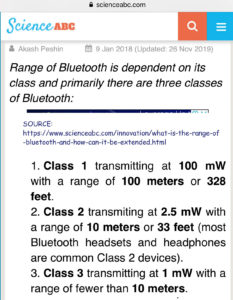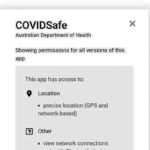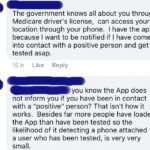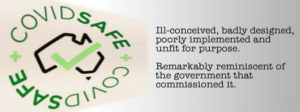The CovidSafe app has triggered innumerable privacy and security concerns amidst the public, who are already deeply suspicious of a government that has eroded public trust. Amongst recent instances of the diminishment of our trust are:
- accusing arsonists of being responsible for the Summer fires,
- much pork barrelling in coalition seats (including but not restricted to the Sports-Rorts),
- the draining of Australian river waters by the continued attempt to privatise water supply,
- the recalcitrance over climate change and the attacks instigated by many levels of Government upon members of the public raising the issue,
- government recalcitrance in addressing issues of wage stagnation, welfare reform, and phony debt recovery.
Despite the trust deficit, the Australian Government has spent $1.5m on CovidSafe, including over $700,000 for Amazon to host the data.
But is the issue Trust or Competence?

The lack of trust in this Government’s promotion of this CovidSafe App may be justifiable on their record on privacy and security. Still, you have to keep in mind their frequent displays of incompetence in science and technology. Remember Abbott and Brandis trying to tell the public what metadata was? Remember Malcolm Turnbull trying to come up with a better NBN? Recall both the Australian Census online or the Centrelink portal failures were falsely blamed on convenient DOS attacks? Attacking them on untrustworthiness can be done. Still, it is easier to criticise the App’s lack of suitability both technically and statistically. So I am going to stay away from the privacy and security issue and ask the question, is the CovidSafe App fit for purpose?
The Physics of Radio signals

My analysis begins with a comment in a recent ABC article concerning the software bugs and issues of the COVIDSafe contact-tracing app
“ … “Because mobile phone device models are different in Bluetooth strength and how they operate, all contacts within Bluetooth range are noted on the user’s device,” a DTA spokesperson said. …”
Bugs and issues can be fixed (although not in time before lockdown lift begins), but there are limits to what our science can discern about the physics of radio signals, like Bluetooth.
Let me ask you, dear reader, a few questions.
Do you live in the country, city, an apartment or have anyone who lives within 10 metres of you? Do you stand in a social distancing line keeping the required 1.5m while waiting to get into a shop? The answer to the last question ought to be yes, but bear with me. If you are within 10 metres – or in right circumstances, perhaps twice that – then you and a stranger or a known neighbour can be tagged with “associating” because this App uses Bluetooth to detect other phones.

Before you protest that it is supposed to be when you are within 1.5 metres, keep in mind using BlueTooth for localisation is a very well researched field of study. Bluetooth and other narrowband radio systems can only reach an accuracy of several metres at best without accompanying geolocation or triangulation of wifi data (a strategy later IEEE papers raise as attempts to overcome localisation inaccuracies). Naturally adding geolocation data, raises all the apparent privacy and monitoring concerns (which I said I was not going to go into). This App, for now, doesn’t use geolocation except on the Android/Google version of the App in a limited capacity.

Signal strength isn’t a good indicator of distance between two connected BlueTooth devices, because it is too subject to environmental conditions. Is there a person between the devices? How is the owner holding his/her device? What is its proximity to metal plates that impede the signal path? Are there any other radio frequency reflecting surfaces? Is there a wall? Concrete walls will attenuate the radio signal. Using BlueTooth is essentially wholly inaccurate, and it has absolutely no sense of direction. Much like our Government, but I digress. Whereas the virus can’t traverse walls and floors (unless it is brought into enclosed spaces by people), Bluetooth can. Generically for a distance of approximately 10 metres. Although my testing on a five-year-old iPhone 5 running iOS 9 can make a connection from nearly 20 metres through two building walls or doors. So Bluetooth can’t tell when you are 1.5 metres away.
Meaning two neighbours sitting alone watching TV in their lounge room – according to their respective phones running the App – have been in close contact for hours if your binge-watching a good series. Let’s not even discuss how long you and your neighbours have spent “sleeping” together, while alone in your adjacent houses or apartments with your phones on the charger by your beds. For all you know, anybody’s phone might be standing in the adjacent store, approximately ten or more metres away but with whom you never interact. The Government App will be rife with false positives without you even knowing who these “contacts” are.
But alternatively, a passing stranger’s viral cough load, can in seconds, infect you. So can contact from a surface contaminated with coronavirus. Someone coughing into your face is undetectable by your mutual phones, unless he spends 15 minutes in your proximity, apologising. At least if that happens, you have plenty of time to ask for name and contact information for the contact tracers, when one of you gets unfortunate news after being tested. Touching an infected surface and forgetting to wash your hands before shovelling food into your mouth, means the time between contact and infection, can be hours, but either the wrong or no phone, might be blamed.
The App can detect none of these scenarios that tell you when another person with the same App, has a phone. None of these things will trigger a 15 minute Bluetooth alert. It is not just false positives that it will generate, but it simply can not detect anything other than another phone. Let me reiterate. It is a Phone detection facility, not a virus detection facility!!
The Lottery Probability.

Now let’s discuss some numbers! The ABC reported on the 6th of May, that 5 million phones that had uploaded the App. The Government reported on the same day we had conducted 688K tests Australia-wide for the virus. This lifted our testing stats to 2.6% of the population, presuming not too many people have gone in for repeat tests. Our consequent testing regime has risen (as of 21st of May) to 1,137,684 tests or 4.4% of the Australian population of 25.695 million. Simultaneously, the upload of CovidSafe has slowed to only 5.87 million by the 19th of May. So 22% of the population (a long way from Morrison’s desire for 40%) with an App that can only potentially detect 4.4% of the population, and a lot of these tests will be negative – for now. Only 0.65% of all those tests have been positive.
So let’s rephrase that.

So 22% of the population – if paired with mutual phones running a working version of the CovidSafe App – can confirm the 0.65% of 4.4% of our population, has coronavirus. To be fair, it might have a remote possibility of identifying someone with an infection, but the probability of my winning the lottery has a better chance. Let’s not forget the only alert the App – in theory – sends, is AFTER someone has been infected and have informed authorities and a tracing team has triggered the alarm, which, if they have infected you, is a little too late. Note I used phrases like, “might have” and “in theory.” Sadly as of writing this, the capacity of the App to do any of this is non-existent.
Why?
Operability

As of the 19th of May, no State in Australia has reported any use of the CovidSafe App data, and the State with the most substantial documented infection rate (NSW) “has had issues integrating it into the existing contact-tracing method.” In addition to the incapacity of States to process the data, many smartphones can’t run the CovidSafe App. The Guardian reports, “there are no plans to make it work on phones operating older software than iOS 10 and Android 6.0.” This is not a recent discovery, as we have known for some time that the tracing capacity is inoperative.
Risk factors
The most significant risk is the public’s misunderstanding that it will keep them safe. That leads to complacency, which means people may ease their due diligence and not be so cautious about social distancing and washing their hands regularly. That is where it becomes dangerous.

To quote one woman I interacted with recently on social media said, “I have the app because l want to be notified if l have come into contact with a positive person and get tested ASAP.” The App was never even conceived to be a buzzer that alerts you to positive people nearby. Perceptions like that actually make it dangerous! Not only does it not keep you ”safe,” but it also has the potential to increase the risk of infection through complacency. The Government has been negligent in educating the public not only to what it is supposed to do, but what are the limits of the physics of radio waves and statistical probability.
Alternately?
Instead of focusing on a dysfunctional App, perhaps we should be following the examples of Iceland, South Korea, Germany, or our neighbour New Zealand and upscaling randomised asymptomatic testing or regular testing for critical workers. All the success stories of countries handling the virus have the common thread that testing was crucial.
Conclusion.

The App is not a panacea for tracing infection. It is a placebo to placate the masses who are too technically illiterate to understand the nuances and limitations of technology, by an incompetent Government that focuses on misunderstood technology at the expense of more robust asymptomatic testing of Australians.